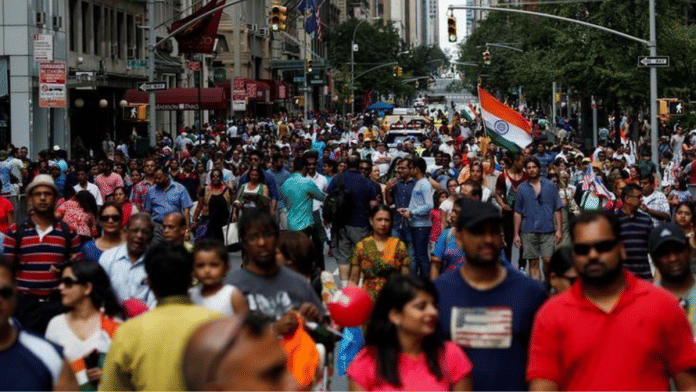New York’s Jackson Heights, popularly known as Jai Kishan Heights by Indian immigrants, has long been a neighbourhood to pay too much for saris and salwars. It’s a place for newcomers to get ripped off first and then receive a warm welcome. But Jackson Heights is still formally named after the 1900s developer who created the garden buildings that line its inner streets, which were originally reserved for an upper-class milieu of white people.
Now, new street names are trying to turn the neighborhood South Asian—despite anxieties about immigrants changing American life gaining ground. Among those erected under Mayor Eric Adams’ watch are Dr BR Ambedkar Way, Ganesh Temple Street, Guru Nanak Way, Punjab Avenue, Allama Iqbal Avenue, Little Bangladesh Avenue.
Recently, over a steaming plate of momos on Mount Everest Way, my friend pointed at a pile of trash gathered near a street sign, and asked what the new names had done for the area. Whether they had led to cleaner streets, more community centers, and better public schools.
This is a common question. And a valid one. The names can seem superficial, like a prize awarded to an employee instead of a promotion.
My answer: A street name can’t save a neighbourhood. It’s not in the same category as passing a law or building a community centre. It is an acknowledgment that we have worked and lived in a place for a long time. And they represent a hope that South Asian street names will become as memorable as Washington Square Park or Williamsburg.
Also read: Voters in Ayodhya have shown what it means to be Hindu. Indian-Americans must learn
Streets and communities
“They are definitely important,” agreed Balvinder Bhaura, the general secretary of the 36-year-old Shri Guru Ravidas temple located in Woodside, Queens. “It sends a message that there is a community here and that we have been here for a long time.”
When I met Bhaura, he was in the temple’s basement, his knuckles deep in a plate of vibrant yellow dal. He ushered me to the third floor, where I waited for him in the quiet BR Ambedkar library. Through the window, I could see the green sign for BR Ambedkar Way.
The Shri Guru Ravidas temple led the initiative to add the new name of BR Ambedkar Way under the sign for Broadway. Aside from the sign, it is easy to miss the temple, which has a monotone facade without much ornament.
“That was put up last year,” Bhaura gestured to the sign as he entered the library. “The city gave us a permit to close the street and sent police cars to protect us. And our whole community came to visit. I think there were between 8,000 to 10,000 people.”
The process to put up a name is lengthy: First, a community must elect a name. “We chose Ambedkar because he came to Columbia University in 1913 and because he turned into law what Shri Guru Ravidas preached,” said Bhaura.
Then, that name must be sent to the community board. If the board approves, the proposal is sent to the local city council member, who passes it on to the mayor. If the mayor approves, a sign will appear where it has been requested, underneath the original name. And it’s followed by a big celebration.
But harder questions emerge in places where there are more South Asians. Who gets to be named?
Take Richmond Hill in Queens, where Punjab Avenue, Gurudwara Street, and Guru Nanak Way are separated by a few blocks. They are two blocks away from Allama Iqbal Avenue; surrounded by Little Guyana, and Trinidad and Tobago Street. Richard David, a Richmond Hill district leader, told me that there are streets even named after local community members, such as Aunty Rita, a mandir singer who was killed in a hit-and-run.
The street signs from warring nations in one place might make it seem like the neighbourhood is about to escalate into dispute but the blocks are quiet and peaceful. I pass barber shops with every single flag from the Indian subcontinent—and even those from the United Kingdom.
It is true that when I ask people for directions to Punjab Avenue, no one seems to know where it is. After the party is over, Guru Nanak Way once again reverts to the useful name of 101st Avenue.
Then there is what an outsider experiences. You can tell who lives in Richmond Hill today by the wafting aroma of tadka. The Desi Talk newspapers have Indian Prime Minister Narendra Modi’s face beaming on the front pages. The hulking, oiled-up men on posters are advertising kabbadi matches in New Jersey. The street signs only confirm what you see.
One day, the demographics will change, and these markers will disappear. What will then tip an outsider off about Richmond Hill’s long and storied history will be the sign for Guru Nanak Way, just two blocks away from Allama Iqbal Avenue. This is precisely why new street names are so important.
Meghna Rao is a writer and editor from New York. She tweets @meghn_a. Views are personal.
(Edited by Ratan Priya)






